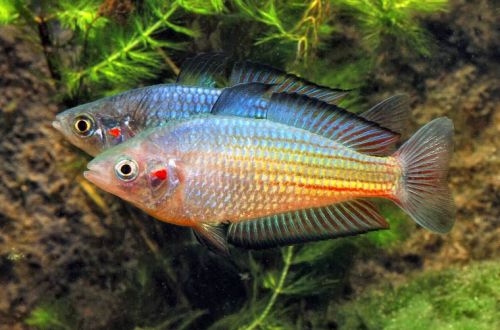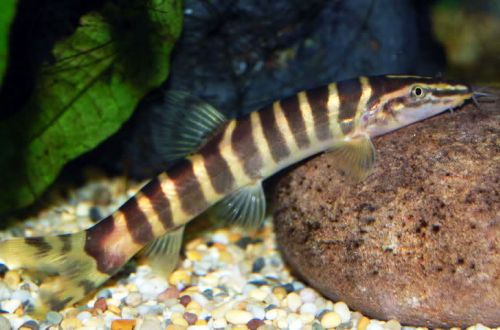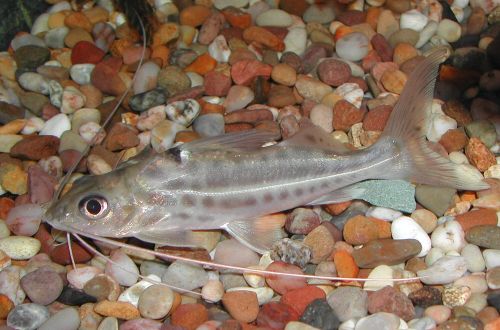
Melanotenia Dubulais
Melanothenia duboulayi, scientific name Melanotaenia duboulayi, belongs to the Melanotaeniidae family. Named for the biologist du Boulay, who first discovered the Richmond River in northern New South Wales in the 1870s. A hardy, easy-to-keep bright and peaceful fish that will make a good addition to the freshwater aquarium community. It will be a good choice for the beginner aquarist.

Contents
Habitat
Occurs from the east coast of Australia in the subtropical climate zone. It is found everywhere in rivers, streams, swamps, lakes with rich aquatic vegetation. The natural habitat is subject to seasonal changes with high fluctuations in temperature, water level and hydrochemical values.
Currently, it has been introduced to other continents, becoming an invasive species, in particular, it lives in the rivers of North America.
Brief information:
- The volume of the aquarium – from 150 liters.
- Temperature – 18-30°C
- Value pH — 6.5–8.0
- Water hardness – 10–20 dGH
- Substrate type – any dark
- Lighting – subdued
- Brackish water – no
- Water movement – moderate
- The size of the fish is about 10 cm.
- Food – any food
- Temperament – peaceful
- Content in a group of 6-8 individuals
Description
The maximum size of adults reaches about 12 cm, in aquariums it is somewhat smaller – up to 10 cm. The fish have a thin body compressed laterally. The anal fin extends from the middle of the abdomen to the very tail. The dorsal fin is divided in two, with the first part noticeably smaller than the second. The colors vary depending on the region of origin. The body color is silvery with blue, green and yellow hues. A crimson spot is noticeable on the gill cover. The fins are red or blue with a black border.
Males differ from females in their brighter coloration and pointed tips of the dorsal and anal fins. In females, they are rounded.
Food
In nature, plant material and small invertebrates form the basis of the diet. In a home aquarium, it can eat dry and freeze-dried food in the form of flakes, granules.
Maintenance and care, arrangement of the aquarium
The optimal size of the aquarium for a group of 6-8 fish starts from 150-200 liters. In the nature of Melanothenia, Dubulai spend a significant part of their time swimming around thickets of plants, snags and other submerged objects, where they can hide in case of danger. When decorating, you should also combine free areas for swimming with places for shelters, for example, from the same plants.
Evolutionarily adapted to life in various environments in a wide range of temperatures, pH and dGH values. Due to their unpretentiousness, they are considered easy to maintain. It is enough to provide clean warm water and regularly maintain the aquarium, prevent equipment.
Behavior and Compatibility
They prefer to be in groups consisting mainly of females. Males stay alone or at a distance. Peaceful towards other species. Compatible with fish of comparable size and temperament.
Breeding / breeding
In its natural habitat, spawning occurs from September to December with the arrival of summer rains (in the Southern Hemisphere these are warm months). In the home aquarium, seasonality is not expressed. They spawn in the twilight among plants, attaching eggs to the surface of the leaves. Females lay only a few eggs a day, so the whole process stretches for several weeks. The incubation period lasts 5–9 days at a water temperature of 24 to 29°C. The emerging fry gather in a group and are near the surface. After 12 hours, they begin to eat. In the early days, they are only able to take microfeeds, such as ciliates. As they grow, they will begin to take larger meals. Juveniles of different ages can create feeding problems.
Although adult fish do not show predatory tendencies towards their offspring, it is still advisable to transfer the fry to a separate tank for ease of maintenance.
Fish diseases
In a favorable environment, cases of the disease are rare. When the first symptoms of the disease appear (lethargy, deformation of the body, the appearance of spots, etc.), it is first necessary to check the quality of the water. Probably, bringing all indicators of the habitat back to normal will allow the body of the fish to cope with the disease on its own. Otherwise, medical treatment will be required. Read more in the section “Diseases of aquarium fish”.





